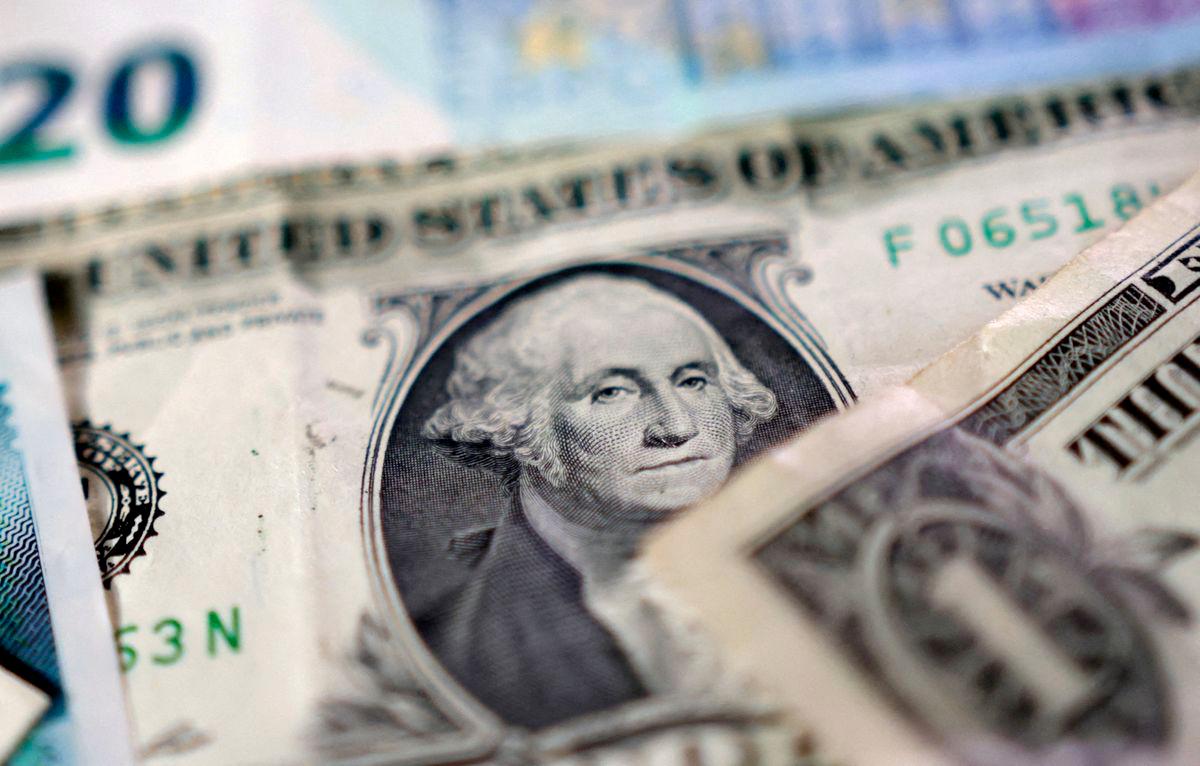LONDON: The dollar headed for its strongest weekly performance in almost three years against other major currencies, maintaining momentum on Friday after U.S. President Donald Trump imposed new tariff rates on dozens of trade partners.
Some of the currencies of the countries that were hit the hardest, such as Switzerland, which now faces a 39% rate, fell sharply. The Swiss franc touched its weakest in six weeks, while the Canadian dollar headed for a seventh straight weekly loss.
The dollar also gained against other currencies due to drivers other than tariffs. The yen headed for its largest weekly loss this year after the Bank of Japan signalled it was in no hurry to resume interest rate hikes, prompting Finance Minister Katsunobu Kato to say on Friday that officials were “alarmed” by currency moves.
Friday also brings the monthly U.S. employment report, which is expected to show 110,000 workers were added to nonfarm payrolls in July.
A large part of the dollar’s strength this month has come from the perception among investors that Trump’s tariffs have not derailed the economy and, so far, have not drastically lifted inflation.
The Federal Reserve, despite pressure from Trump on Chair Jerome Powell to cut rates, has indicated it is in no rush to do so. Friday’s payrolls report may not move the needle much on that assumption, even if a weaker reading elicits some selling of U.S. assets like the dollar, according to IG strategist Chris Beauchamp.
“Fundamentally the U.S. economy is okay, it’s not in the most wonderful place, tariffs will hurt a little bit and the market looks like it could be vulnerable in the short term to more selling, simply as an excuse to take some money off the table to sit it out and wait and see what happens,“ he said.
“You’d have to have a lot of very bad data in a very short period of time between now and September to revive the corpse of a September rate cut,“ he said.
The dollar index, which tracks the U.S. currency against a basket of six others, is on course to rise 2.4% this week, its best weekly performance since a 3.1% rally in September 2022. It was last up 0.1% at 100.13, its highest since late May.
TARIFF HITS
The Swissie fell against a range of currencies, surrendering its habitual safe-haven label in the face of a selloff in stocks and commodities, in response to Trump’s hefty duties and to his demand that pharma companies - key Swiss exporters - lower the prices at which they sell to U.S. consumers.
The dollar rose by as much as 0.6% to a high of 0.8173 francs, the most in six weeks, while the euro gained 0.5% to trade at 0.932 francs.
The yen, another classic safe-haven currency, was last a touch stronger on the day against the dollar, which fell 0.15% to 150.545 yen, having earlier traded at its strongest since late March.
The dollar also advanced on the Canadian dollar, up 0.13% at the day’s high of $1.38735, after Canada was hit with a 35% tariff, instead of the threatened 25%.
The euro remained pinned near an almost two-month low around $1.1408, as it continues to be weighed down by what markets see as a lopsided trade agreement with Washington.
“In the short-term, you can make the case for more dollar strength,“ said Mike Houlahan, director at Electus Financial in Auckland. “The lion’s share of the tariff news has washed through.”
“The big move of the week has really been the euro getting re-rated downwards,“ he said. “The net result would be the EU-U.S. trade deal is a further headwind for the euro.”
The EU’s framework trade agreement with the U.S., struck on Sunday, was quickly criticized by French leaders and the German head of the European Parliament’s trade committee as being unfair for Europe. - Reuters









